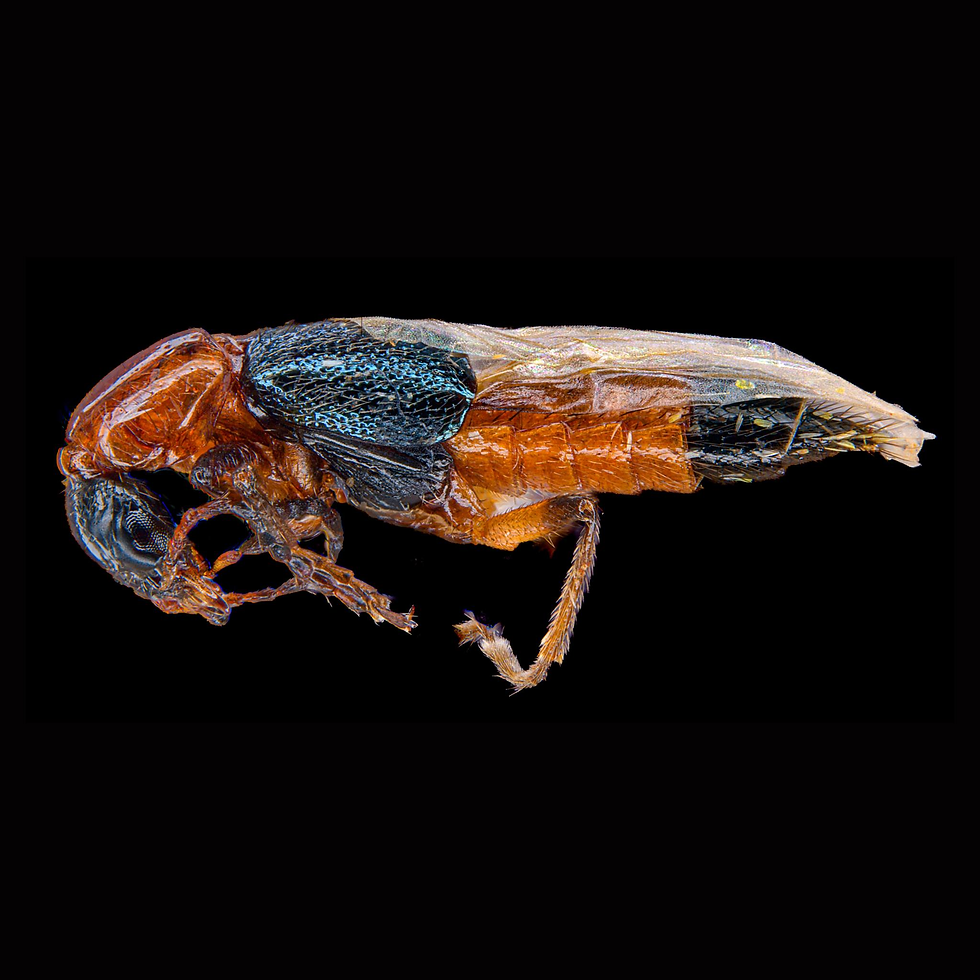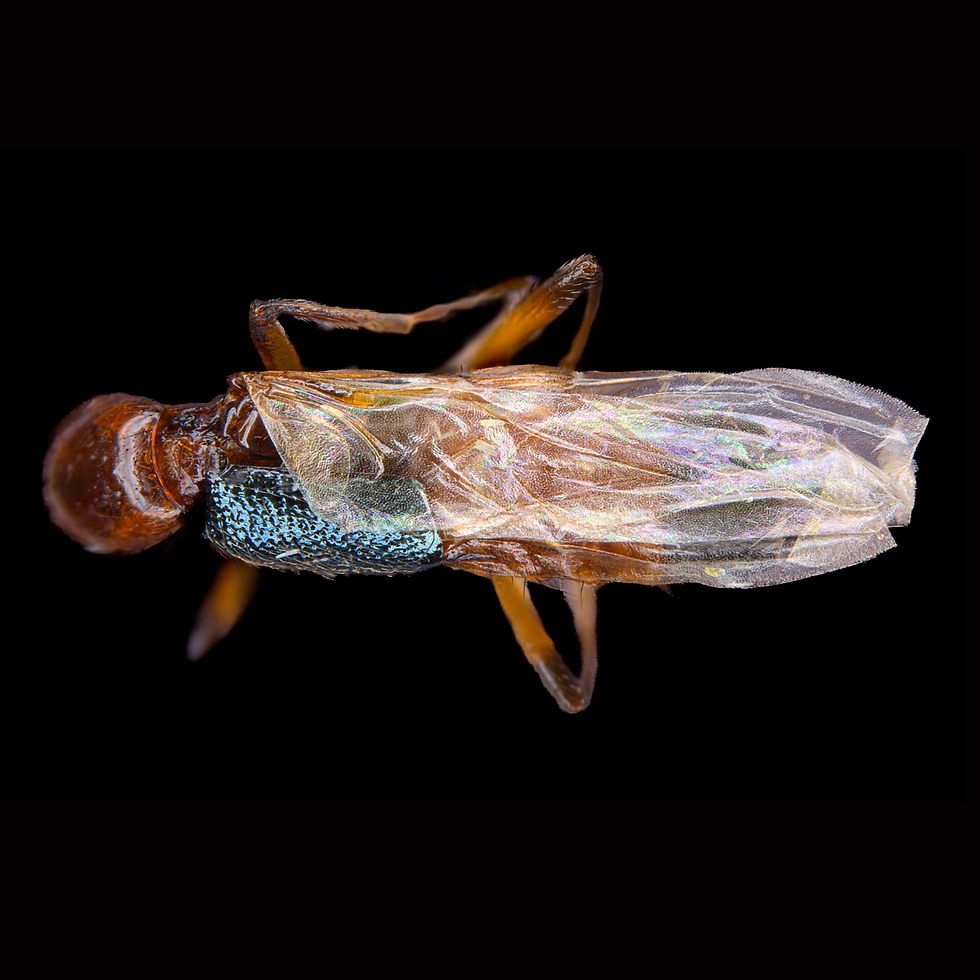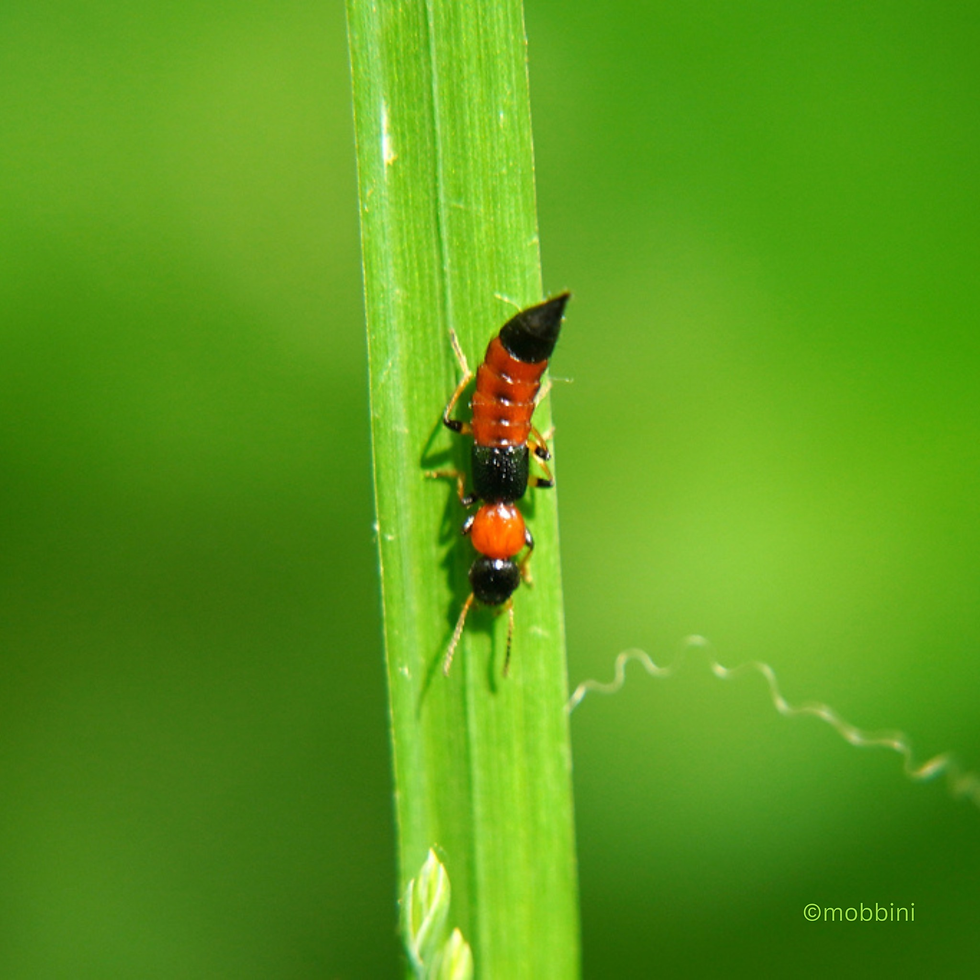Specimen Showcase | Caution⚠️: 𝘗𝘢𝘦𝘥𝘦𝘳𝘶𝘴 Rove Beetles!
- Hong Kong Biodiversity Museum
- Mar 13
- 2 min read
Insects are the most successful organisms on Earth in terms of sheer diversity, representing more than half of the world's Eukaryotic (pluricellular organisms) biodiversity. You may have read, including here, that beetles (order Coleoptera) form the most diverse group of insects, but do you know which families are among the most diverse?

The rove beetles, the Staphylinidae family, with over 60,000 described species in thousands of genera, is not only the most diverse beetle group with the weevils (Curculionidae), but also one of the largest families for any organism. Despite their humbling diversity, rove beetles may be loathed by some people. Occasionally, incidents occur in which people crushed an insect thinking it is just a harmless bug. If the hands are not washed quickly, this can end up in a serious eye or skin irritation🤢. The culprit may be a rove beetle of the genus 𝘗𝘢𝘦𝘥𝘦𝘳𝘶𝘴, which hemolymph contains a toxin called “pederin”. This toxin is one of the most complex non-proteinaceous arthropod secretions, even more potent than the venom of the balck widow spiders. It can cause in humans conjunctivitis and dermatitis linearis--a.k.a. Paederus dermatitis, which got its name directly from the rove beetle genus 𝘗𝘢𝘦𝘥𝘦𝘳𝘶𝘴. These rove beetles usually have a prominent black or blue and red, two-toned coloration, sometimes entirely monochromatic black, blue or red. They are commonly found in croplands and gardens and prey on other small insects; but when attacked by other insects their toxin and aposematic⚠️ colouration will serve as a good protection.

So, is pederin just harmful to us? Not really! Experiments have shown that it can act as a DNA inhibitor at cellular level to block mitosis🧬, which successfully suppressed cancerous tumors and stimulated regeneration of damaged tissues in mice and rats🐀. It also induced cell fusion in human skin fibroblasts, etc. which shows the potential of pederin to help fight cancer😲! Apart from their contribution in medical research, the rove beetles are also an inspiration to aerospace engineers🛠, due to the unique and sophisticated folding mechanism used for their second pair of wings using a right–left asymmetric pattern. Only when the rove beetles are ready to fly, they will rapidly unfold their wings from under their elytra, displaying high deployment capability and storage efficiency. No doubt that with tens of thousands of species described and thousands more to be discovered, the rove beetles are far from revealing all their secrets…

If you are amazed by the intricacy of these inconspicuous insects, visit the Hong Kong Biodiversity Museum to seize the opportunity to appreciate the specimens of the 𝘗𝘢𝘦𝘥𝘦𝘳𝘶𝘴 rove beetles! Apart from them, we also possess a 100 years old specimen of a rove beetle called 𝘌𝘳𝘪𝘤𝘩𝘴𝘰𝘯𝘪𝘶𝘴 𝘤𝘪𝘯𝘦𝘳𝘢𝘴𝘤𝘦𝘯𝘴 collected in 1923! Happy centennial💯!
Text: Winnie Lam

Comments